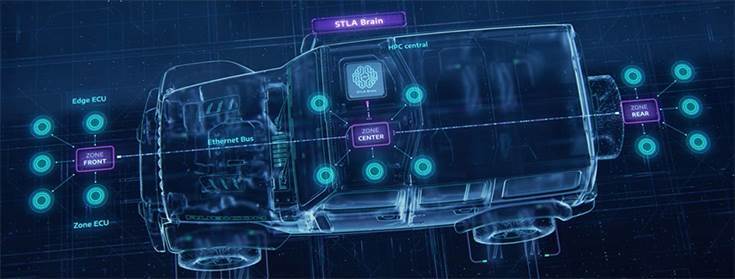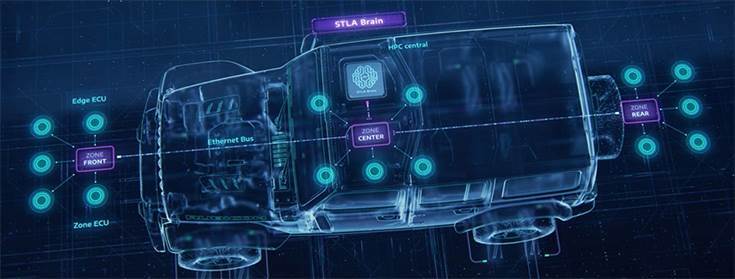Stellantis is hugely benefiting from the growing demand for connected vehicles the world over and the steady stream of new connected features in its vehicles. The company, which has 14 brands, has seen its high-margin revenue from software and connected services grow by 2.5 times since 2021, as the number of subscribers globally during that same period has increased to 5 million.
Additionally, the monetizable car parc has grown 15% to 13.8 million vehicles, and Stellantis delivered more than 94 million over-the-air (OTA) updates in 2023, adding and improving features in its existing vehicles.
Those achievements set the foundation for the next chapter of software growth at Stellantis, which is using cloud-based design and testing tools, including the ground-breaking Virtual Engineering Workbench to redefine automotive software development speed, quality and deployment. The software, developed in-house and with a roster of strategic partners, enables next-generation features for upcoming Stellantis brand vehicles and those on the road today.
“In a little more than two years we have made a decisive shift from a traditional auto industry mindset to operating much more like a startup company, including a sharp focus on speed and building up our own software creation capabilities. It gives us critical flexibility and a competitive advantage going forward,” said Yves Bonnefont, Stellantis Chief Software Officer. “Now we take the next step and begin scaling up, which includes the tech readiness for integration of our transformative STLA Brain, STLA SmartCockpit and STLA AutoDrive AI-powered technology platforms.”
Stellantis has built its in-house capabilities to develop its own software, taking advantage of a global footprint of technology development hubs to work 24/7, building and customizing software products for each of the Company’s vehicle platforms.
 STLA Brain reduces complexity, enabling the number of electronic control units (ECUs) per vehicle to be reduced by half to approximately 60 ECUs.
STLA Brain reduces complexity, enabling the number of electronic control units (ECUs) per vehicle to be reduced by half to approximately 60 ECUs.
The cutting-edge technology platforms are:
STLA Brain: The foundational architecture offers centralized computing full over-the-air access to sensors and actuators. It reduces complexity, enabling the number of electronic control units (ECUs) per vehicle to be reduced by half to approximately 60 ECUs. New features can be developed in-house in less than six months, one-fourth the time of today’s process. Technology readiness for integration is expected by the end of the year, with vehicle integration in 2025.
STLA SmartCockpit: The platform ushers in a new generation of personalization and connected capabilities, powered by machine learning and AI technologies, giving users a seamless integration with their digital lives. A focus on simplified menus with fewer clicks for response to user inputs significantly improves ease of use. AI-enabled experiences give vehicle occupants more options in navigation, media, climate, lighting and productivity features. STLA SmartCockpit debuts in a Stellantis brand vehicle in 2025.
STLA AutoDrive: The system leverages the capabilities of STLA Brain and STLA SmartCockpit to deliver useful and continuously updated Advanced Driver Assistance System (ADAS) technology that is intuitive, robust and inspires driver confidence. STLA AutoDrive targets significantly increasing the uninterrupted time and distance for ADAS-supported driving. The strategy includes industry-leading ADAS that provides drivers with both hands-off/eyes-off-the-road mobility and a fallback to limited hands-off/eyes-on-the-road cruising (Level 2+) in the same system. Eyes-off technology readiness for integration is expected by the end of the year with the commercial launch in 2025.
